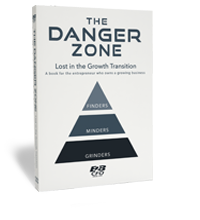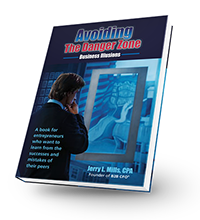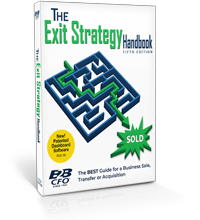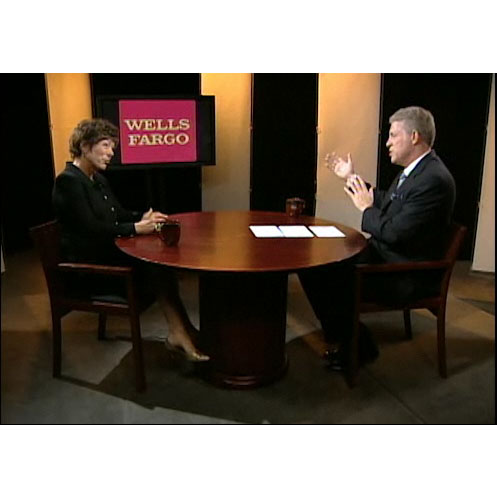
by Ania Kubicki | Jun 6, 2012 | Archives
In this segment of the Wells Fargo Business Insight podcast series, Jerry Mills discusses how businesses can use a couple of strategies to enhance their cash flow including improved management skills. ...

by Ania Kubicki | Apr 12, 2012 | Archives
Have you ever asked yourself the question, “I am making a profit, but I don’t know where the cash is?” Many business owners tend to manage their business strictly from the income statement. An income statement is very important to a business as it provides a historical view of what transpired in the company over a period of time and gives the business owner, banks and other investors a better perspective of what contributed to the net profit or loss reported. However, the income statement does not necessarily translate into an increase or decrease in cash. Understanding how the income statement results will impact the cash flow of the company is equally important, yet often ignored. Anyone running a business needs a clear vision of how his/her business decisions affect the finances of the company to achieve the desired success desire. Cash is king. Every business owner should have a clear understanding of the financial implications of his/her business decisions to increase the chance of success. If you don’t take control of your cash, it will most certainly take control of you. Here are some common issues that may affect the cash flow of the business: 1. Invoices issued upon the shipment of product or the delivery of services are delayed because the supporting information has not been processed in the accounting system on a timely basis. 2. Past due receivables are increasing because customers are experiencing cash flow issues themselves. 3. Customers are paying their invoices short because of product quality issues or invoicing errors. 4. Inventory is increasing faster than sales because of over-purchasing inventory components in...
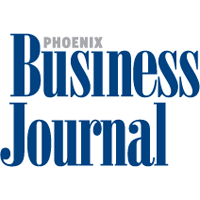
by Ania Kubicki | Mar 29, 2012 | Archives
Now that we’re coming out of a recession, everyone’s business seems to feel pinched and contorted. Money is flowing again, but in odd ways. According to Mark Derr, most businesses have gone too crazy cutting expenses – and they’ve cut the very infrastructure that was making them money in the first place. Mark, who works out of Scottsdale, has seen this countless times as a consultant with B2B CFO, which acts as a chief financial officer to all sizes of business. He says that the bean counters in these businesses — sometimes even the founder — got caught up in cost-cutting without taking a strategic approach. Good investments in profitability got tossed out alongside the garbage in a full-scale war on expenses. “When you’re a numbers person, you’re looking at expenses,” Derr explains. “But the reality is it all starts at the top line: revenue. If you ignore the business development, marketing and sales, then your business is going to fail.” You can’t cut your way to profitability. Derr says that all businesses go through what his company founder, Jerry Mills, calls the “Danger Zone.” Companies bootstrap their way to initial success, but that infrastructure begins to wear with the increased demand. By infrastructure, Derr is referring to your business development and marketing staff, your HR team and physical items such as equipment or computer systems. To alleviate the burden, the company starts to spend money on infrastructure, but it quickly begins to run out of cash because it isn’t profitable enough. “It’s not surprising to hear a business owner say, “I don’t know where I’m going to get...

by Ania Kubicki | Mar 22, 2012 | Archives
Welcome to the Eventual Millionaire Podcast. I’m Jaime Tardy and today we have Jerry Mills on the show. Jerry runs B2B CFO so Business to Business CFO, a company that provides part-time CFO services to companies. I really appreciate him being on today. Thanks so much for coming on the show, Jerry. JERRY MILLS: Glad to be here. JAIME TARDY: Perfect. So let’s start off with how did you even get started becoming business owner? Was it CFO Services or was it something beforehand? JM: No, it has always been CFO Services. I saw the need for this kind of business back in the mid ‘80s. I spent several years researching it and developing a business plan and launched it in 1987. So I have been doing this since 1987 and that’s really the only business I have ever had. JT: So did you always sort of know yourself as entrepreneurial or what made you start it to begin with? JM: Well there are a couple reasons that I started. One, I saw the need; I saw that there was a market niche, if you would. I saw clients being underserved in this area. The other area that caused me to start it was in my previous employment. I saw a lot of professionals when they hit their mid 50s being laid off by their employers and I wanted to build a company that would allow me to have job security when I hit my 50s. I didn’t feel like it’s very wise, you know, I’m married, have four children and I just didn’t feel it was wise to...

by Ania Kubicki | Feb 25, 2012 | Archives
Pricing strategy, liquidity, capacity are key components to business success (This story is written by Debra Christein, a partner with B2B CFO who serves on the Board of Directors of the Women’s Exchange of Washtenaw, as well as co-chair of its annual conference, WXW Forum12.) Have you ever made a paper airplane? Did it fly? If you’re like me, probably not. And you know that it didn’t matter how many times you launched it, how fast you threw it or the angle – it would not fly, right? Also, if you’re like me, every once in a while you made one that flew. What was the difference? What special blend of tail height, wing breadth and body length made this piece of paper aerodynamic? Could you reproduce it in the next version? Could you produce success in a paper airplane ten times larger with a bunch of new features? Debra Christein Paper airplanes are a lot like business models. If a business model is not sound, if it’s not built to create a successful business, you can’t work hard enough or long enough to create a successful, sustainable company. The components of a successful business model are pricing strategy, capacity, infrastructure, and liquidity. Pricing strategy refers to the relationship of what you charge for your product or service to the cost of providing that service. If the price you can charge in your market does not cover the direct costs involved and an adequate portion of the general company costs, well, as the old saying goes – you can’t make it up in volume. In the airplane analogy, this...






